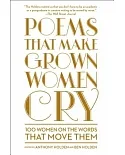@font-face { font-family: "Arial"; }@font-face { font-family: "Cambria"; }@font-face { font-family: "Palatino"; }p.MsoNormal, li.MsoNormal, div.MsoNormal { margin: 0in 0in 10pt; font-size:
14pt; font-family: "Times New Roman"; }p.MsoCommentText, li.MsoCommentText, div.MsoCommentText { margin: 0in 0in 10pt; font-size: 12pt; font-family: "Times New Roman";
}span.MsoCommentReference { }span.CommentTextChar { font-family: Palatino; }div.Section1 { page: Section1; } @font-face { font-family: "Arial"; }@font-face { font-family: "Cambria";
}@font-face { font-family: "Palatino"; }p.MsoNormal, li.MsoNormal, div.MsoNormal { margin: 0in 0in 10pt; font-size: 14pt; font-family: "Times New Roman"; }p.MsoCommentText, li.MsoCommentText,
div.MsoCommentText { margin: 0in 0in 10pt; font-size: 12pt; font-family: "Times New Roman"; }span.MsoCommentReference { }span.CommentTextChar { font-family: Palatino; }div.Section1 { page:
Section1; }
@font-face { font-family: "Arial"; }@font-face { font-family: "Cambria"; }@font-face { font-family: "Palatino"; }p.MsoNormal, li.MsoNormal, div.MsoNormal { margin: 0in 0in 10pt; font-size:
14pt; font-family: "Times New Roman"; }p.MsoCommentText, li.MsoCommentText, div.MsoCommentText { margin: 0in 0in 10pt; font-size: 12pt; font-family: "Times New Roman";
}span.MsoCommentReference { }span.CommentTextChar { font-family: Palatino; }div.Section1 { page: Section1; }
Loved for his decidedly American voice, for his painterly rendering of modern urban settings, and for his ability to re-imagine a living language shaped by the philosophy of “no ideas but in
things,” William Carlos Williams (1883–1963) left an indelible mark on modern poetry. As each successive generation of poets discovers the “new” that lives within his work, his durability and
expansiveness make him an influential poet for the twenty-first century as well. The one hundred and two poems by one hundred and two homage-paying poets collected in Visiting Dr.
Williams demonstrate the range of his influence in ways that permanently echo and amplify the transcendent music of his language.
A foreword by poet and Williams biographer Paul Mariani places this revolutionary physician-poet in understandable context, and an introduction by editors Sheila Coghill and Thom Tammaro
provides further understanding of the poet and his influence. But the heart of the book is found in the poems themselves, which demonstrate just how vital Williams remains in our collective
memory. Robert Creeley, David Wojahn, Maxine Kumin, James Laughlin, A. R. Ammons, Wendell Berry, Heid Erdrich, Frank O’Hara, Lyn Lifshin, Denise Levertov, Wallace Stevens, John Ashbery, Allen
Ginsberg, Philip Levine, and a host of other poets draw upon a wide range of voices, styles, and forms to pay tribute to Williams’s unique legacy.
As Paul Mariani writes in his foreword, Williams, “in his deep modesty and despair, . . . listened—and taught us to listen—for the dance of the syllables.” Visiting Dr. Williams
establishes Williams’s centrality to American poets and poetry of the past, present, and future. As they did in Visiting Emily, Visiting Walt, and Visiting Frost, Sheila
Coghill and Thom Tammaro once again capture the conversations between contemporary poets and a legend whose distinctively American voice endures.





















